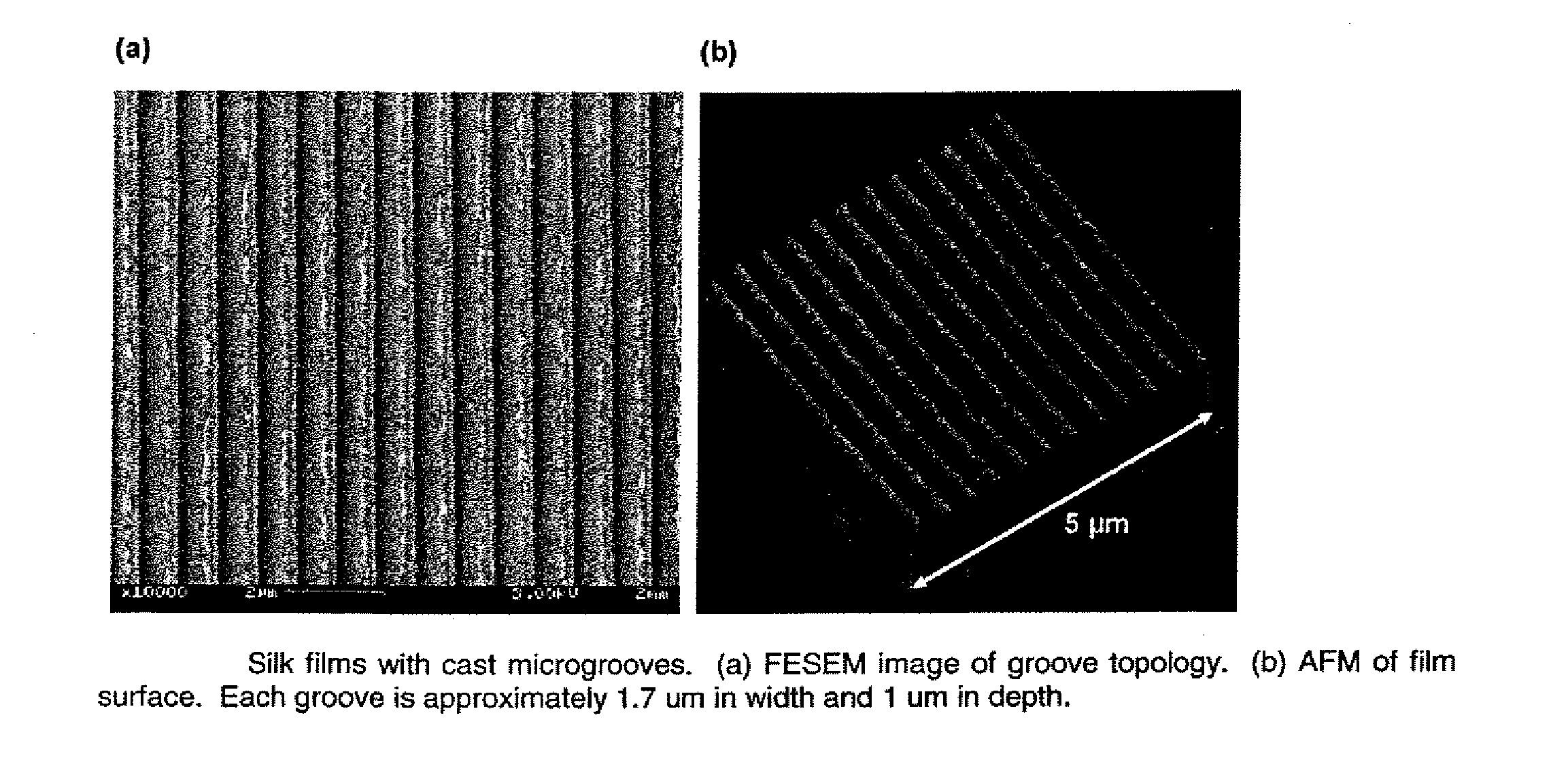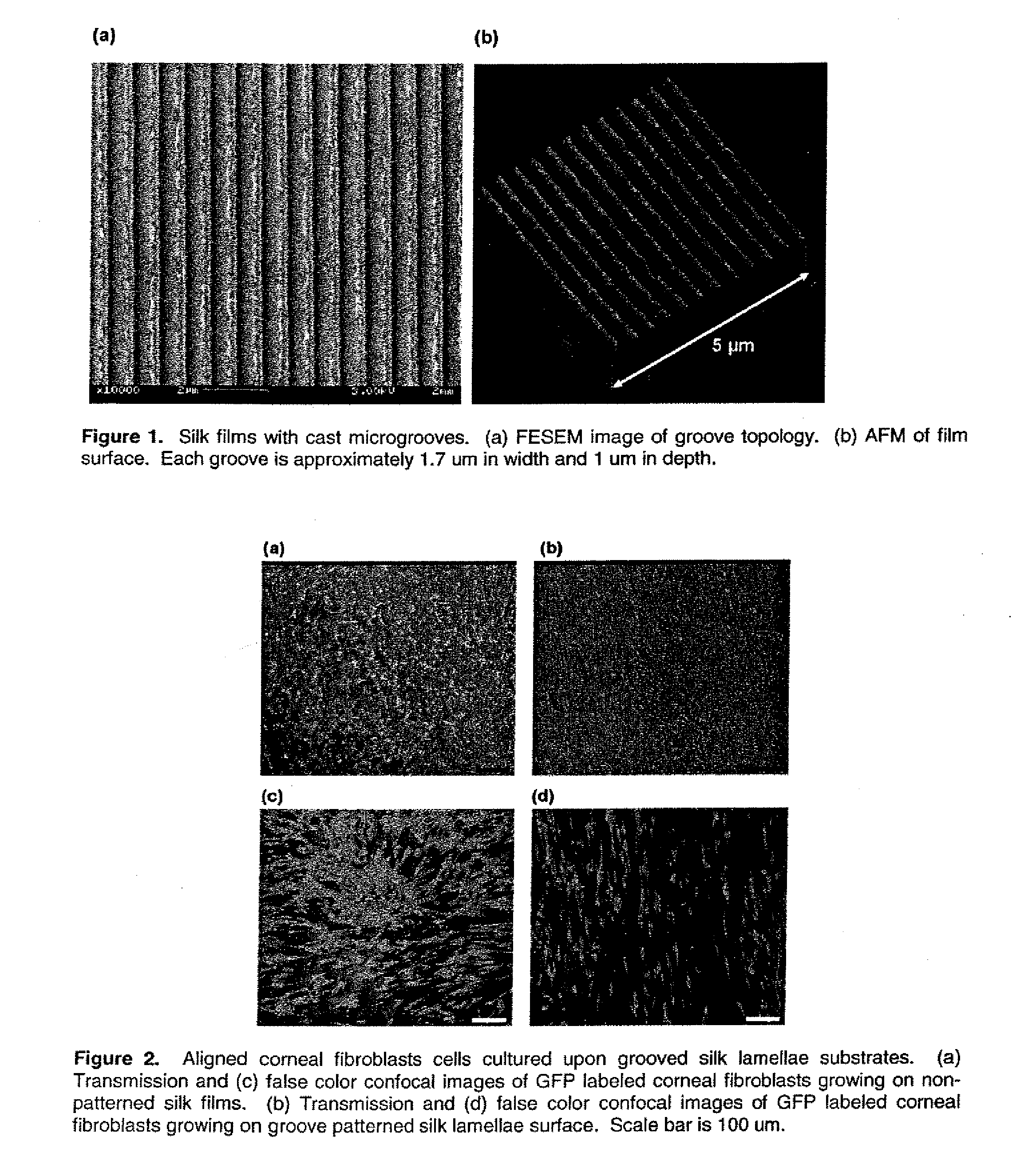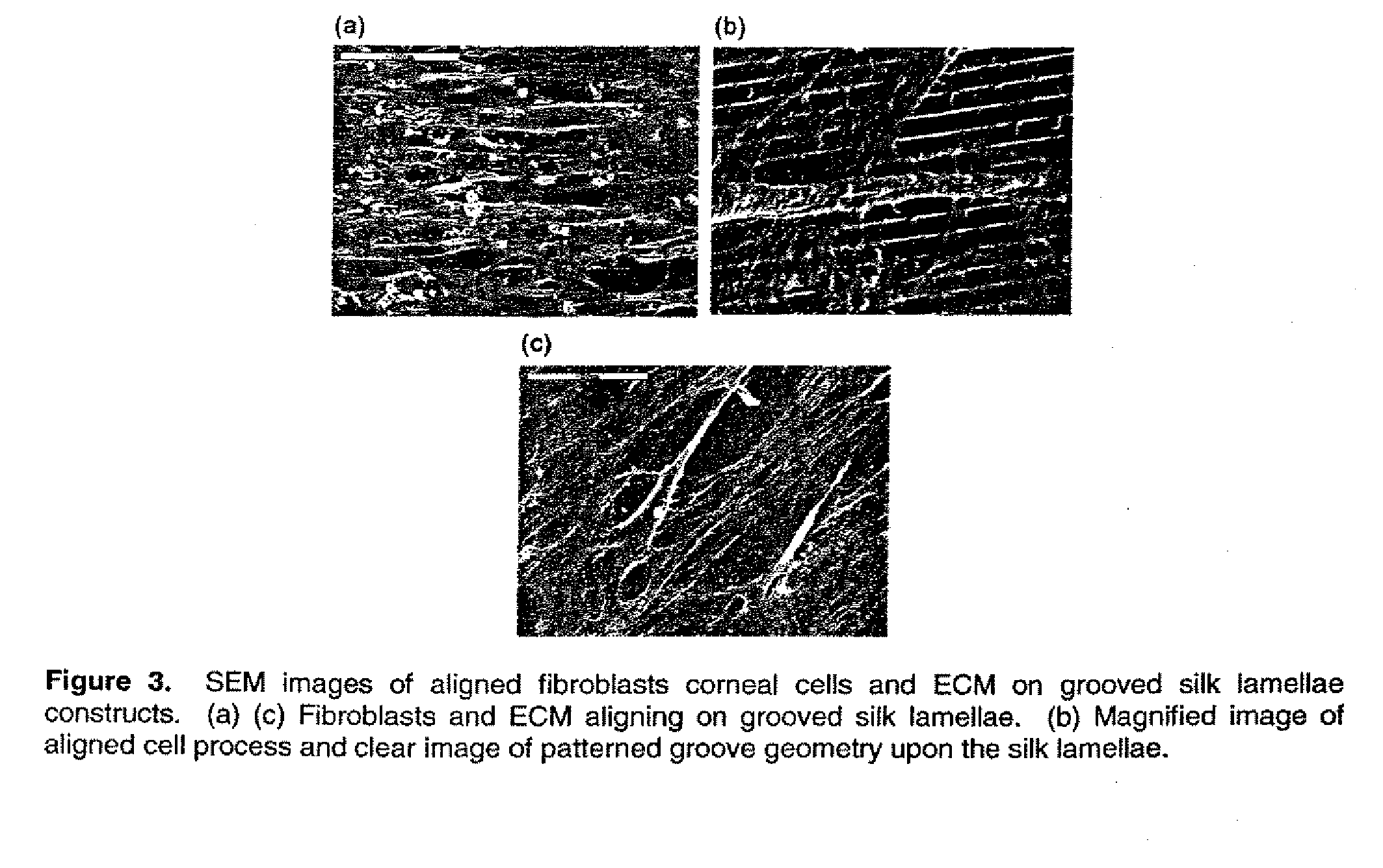Tissue-engineered silk organs
a technology of tissue engineering and organs, applied in the field of tissue engineering silk organs, can solve the problems of tissue rejection, significant vision loss in the general world population, and partially effective, and achieve the effect of better control cell and ecm developmen
- Summary
- Abstract
- Description
- Claims
- Application Information
AI Technical Summary
Benefits of technology
Problems solved by technology
Method used
Image
Examples
example 1
Silk as a Substrate for Corneal Cell Growth
[0064]Silk has been shown to be a viable substrate for a number of different cell types. Silk tissue layers are also capable of supporting corneal cell growth comparative to tissue culture plastic using the Alamar Blue metabolic cell assay. See FIG. 6. As shown in FIG. 6, similar cellular metabolic rates were found upon silk, glass and TCP substrates. These data show the ability to produce lamellae tissue layers as building-blocks for tissue-engineering purposes. It also provides support for the production of silk tissue-engineered cornea.
example 2
Rabbit Stromal Fibroblasts
[0065]The ability of rabbit stromal fibroblasts to grow on silk fibroin substrates was assessed. A monolayer of 8% fibroin solution was deposited on 12 mm round glass coverslips using a spin coater (Laurell Technologies). The spin coater produces an even distribution of the fibroin polymer across the glass surface. The fibroin coated coverslips were steam sterilized and placed within 24-well culture dishes. Primary corneal fibroblasts were isolated from adult rabbit corneas and cultured to confluency on TCP. The cells were then seeded at a density of 10,000 cells / cm2 on the fibroin coated coverslips, and supplemented with media containing Dulbecco's Modified Eagle Medium (DMEM), 10% fetal bovine serum (FBS), and 1% Penstrep (an antibiotic treatment to reduce contamination of the cell cultures). The cells where grown to confluency and the morphology of the cells appeared similar to fibroblasts grown on TCP. See FIG. 7.
[0066]To ensure that the cultured cells ...
example 3
Tissue-Engineered Silk Cornea
[0067]Silk fibroin substrates may be transformed into lamellae tissue layers capable of guiding cell and ECM development and can also be vascularized or porous networks generated to support nutrient diffusion. These lamellae tissue layers can then be combined to faun a 3-D tissue construct, or a tissue-engineered organ.
[0068]The corneal tissue system offers a unique set of parameters that make it a useful model system for the use of the lamellae structures, in that the tissue is largely composed of stacked layers of extracellular matrix interspersed with cell layers. The lamellae tissue layers provide the correct set of material characteristics needed to form corneal tissue in that silk fibroin is robust in its mechanical properties, degrades naturally with native tissue replacement by the seeded cells, is non-immunogenic, and is optically clear with near 100% transmission of visible light. See FIG. 8.
[0069]The tissue layers may be used to produce tissue...
PUM
| Property | Measurement | Unit |
|---|---|---|
| Thickness | aaaaa | aaaaa |
| Thickness | aaaaa | aaaaa |
| Thickness | aaaaa | aaaaa |
Abstract
Description
Claims
Application Information
 Login to View More
Login to View More - R&D
- Intellectual Property
- Life Sciences
- Materials
- Tech Scout
- Unparalleled Data Quality
- Higher Quality Content
- 60% Fewer Hallucinations
Browse by: Latest US Patents, China's latest patents, Technical Efficacy Thesaurus, Application Domain, Technology Topic, Popular Technical Reports.
© 2025 PatSnap. All rights reserved.Legal|Privacy policy|Modern Slavery Act Transparency Statement|Sitemap|About US| Contact US: help@patsnap.com



